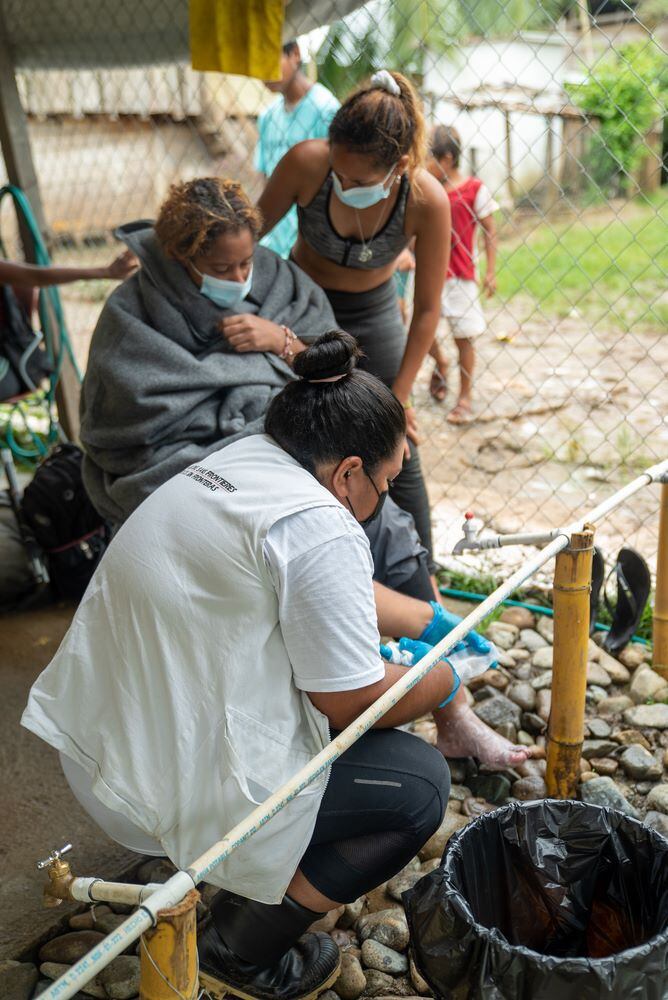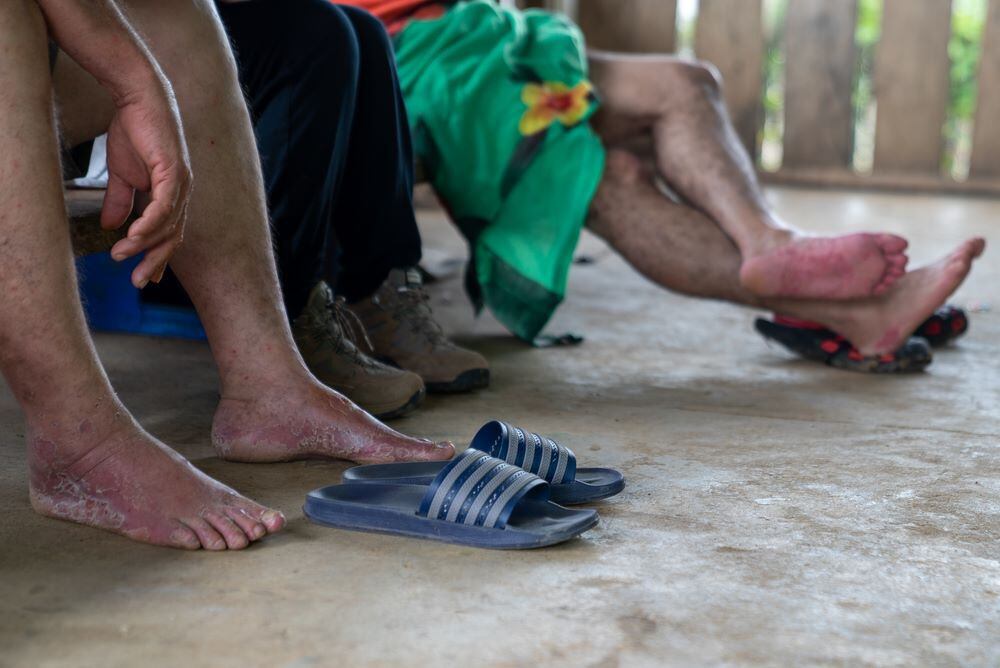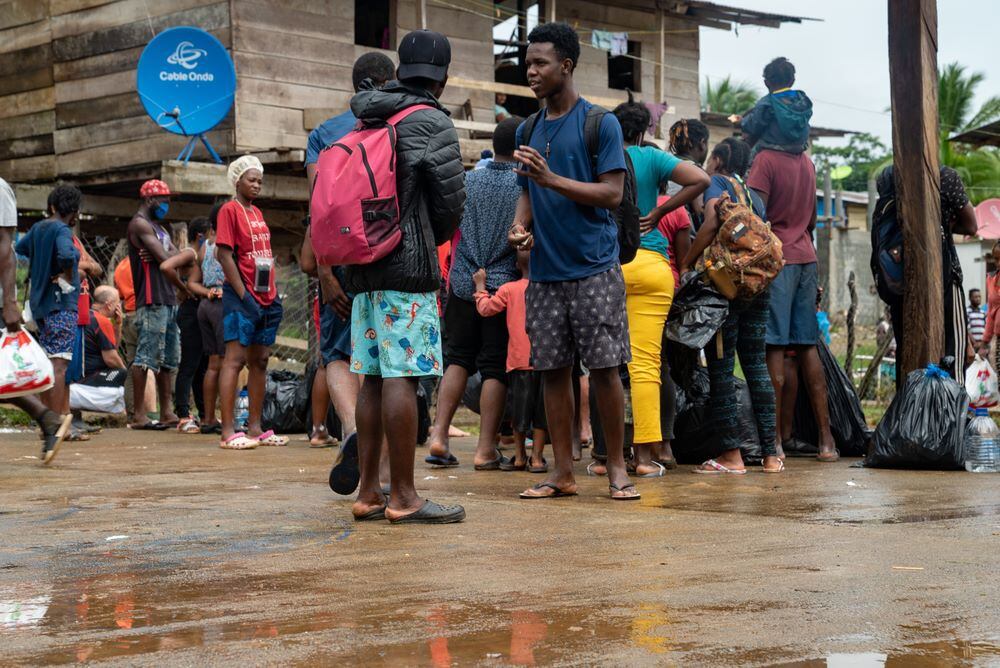The Darien jungle, between Panama and Colombia, is one of the most dangerous routes in the world for refugees and migrants. Those who traverse it face not only a very difficult path with treacherous cliffs and swollen rivers; also to the extreme violence of groups that attack them, steal all their belongings and sexually assault them. Unlike 2021, when the majority of migrants who crossed the Darién Gap were Haitians, this year the country that predominates in the migration lists is Venezuela.
LOOK: The heartbreaking video of a Colombian who crosses the Darién to go to the United States
More than 1,000 kilometers traveled by bus or on foot separate hundreds of Venezuelan families from their house. They migrated from their country for survival, as they point out. They are sitting on the grass, waiting for a tent to clear up for the night. In the Immigration Station of San Vicente (Panama) in a single day between 300 and 900 people are arriving (there are days when up to 1,500 arrive) who want to move as soon as possible to Costa Rica and proceed to the United States.
LOOK: Everything you need to know about the new immigration policy for Venezuelans in the US.
The migration station of San Vicente is located in the Darien provincein Panama. There they arrive, after crossing the dangerous Darien junglethousands of migrants. Only in 2021 did they cross this border between Colombia Y Panama 134,000 migrants, of whom the majority were Haitians (62%) and, in varying numbers, Cubans (14%), from different African countries (3%) and from Venezuela (two%).


While between January and September 2022, according to figures from the Panamanian Government, they crossed the Darien 151,182 people, of which 130,012 are adults and 21,570 minors. Most come from Venezuela (107,692)Haiti (8,613), Ecuador (6,698), Cuba (4,332), India (1,921), and Senegal (1,903).


To get to Panama since Colombiamigrants have several options: pay 400 dollars to take a boat from Capurganá (Colombia) to Carreto (Panama) and then cross the jungle walking for two or three days until they reach Canáan Membrillo (Panama).
You can also travel by boat to Yaviza, Panama, but it is much more expensive.
The other route, less expensive but more dangerous, consists of walking from Capurganá to the Panamanian indigenous community of Canáan Membrillo, a journey that can take between seven and 10 days and in which robberies, assaults and cases of sexual violence are constantly reported.
Between January and August 2022, Doctors Without Borders (MSF) teams attended 151 cases of sexual violence occurred on the journey through the Darienalthough they are aware that there may have been more cases given the difficulties of access in different parts of the jungle.
Doctors without borders
Source: Elcomercio
I, Ronald Payne, am a journalist and author who dedicated his life to telling the stories that need to be said. I have over 7 years of experience as a reporter and editor, covering everything from politics to business to crime.

:quality(75)/cloudfront-us-east-1.images.arcpublishing.com/elcomercio/L273K5G75BA6BCJBAQCPHXK2VY.jpg)

:quality(75)/cloudfront-us-east-1.images.arcpublishing.com/elcomercio/4LFJDJVYKJEV3AIBXYRWFE3RLI.jpg)

:quality(75)/cloudfront-us-east-1.images.arcpublishing.com/elcomercio/YS522KZFQNDPHNPY3WB47UWPH4.jpg)
:quality(75)/cloudfront-us-east-1.images.arcpublishing.com/elcomercio/I5U6ZNGSD5C2VDMQX6HBY6HHRM.jpg)
